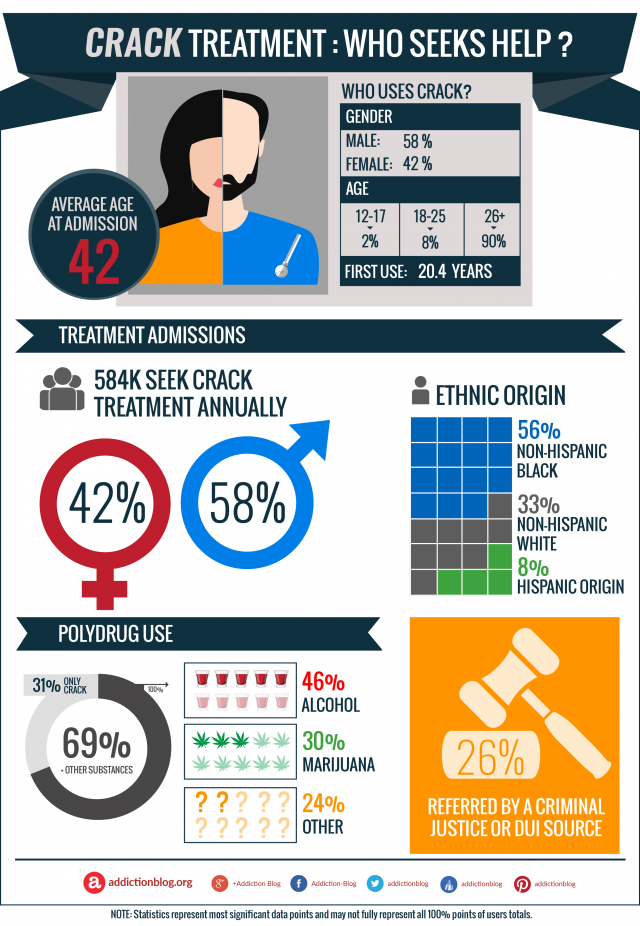Treatment admissions for crack addiction problem
In 2006 in the United States, crack cocaine was the primary drug of abuse in 178,475 treatment admissions. This represented 71% of all primary cocaine admissions to treatment that year. In 2012, about 5% of all treatment admissions were people aged 12 and older.
The average age at crack addiction treatment admission was around 42 years. Out of all the people who sought help for crack use problem, 77% were aged 35 or older.

- Admissions among non-Hispanic Black males peaked at 48 years
- Admissions among non-Hispanic White males peaked at 43 years
Crack cocaine involves increase in crime rates
There is a strong link between crack cocaine use and crime.
The 2001 National Household Survey on Drug Abuse Crack Statistics has examined reported crime rates in the time before crack was introduced to the streets. The survey found that crime rates were about 10% lower.
Another survey found that 8.9% of male adults and 28.5% of female adults who were arrested have admitted to using crack in the year before their arrest. These percentages were also lower within prior years.
Crack addiction treatment: Why it’s necessary?
Treatment of crack addiction is necessary to prevent future health problems or other life complications.
You can speak with your primary care physician or family doctor, a school counselor, your psychologist, or licensed psychiatrist for referral to a cocaine addiction treatment program. Addiction programs can be either inpatient or outpatient, and should include services such as:
- admission and evaluation
- crack detox
- cognitive-behavioral therapy
- contingency management, or motivational incentives
- educational and relapse prevention session
- support group meetings such as 12 step programs, SMART Recovery, Life Ring, Cocaine Anonymous, etc.
- aftercare
You can find certified addiction facilities near your living area, here:
Call SAMHSA’s National Helpline on 1-800-662-HELP (4357) OR 1-800-487-4889 (TDD)
Find a Treatment Facility Near You using SAMHSA’S Treatment Locator
Cocaine addiction treatment questions
Do you want to know more? Feel free to post your questions in the comments section at the bottom of this page. We try to answer all legitimate inquiries personally and promptly. In case we don’t know the answer to your particular question, we will refer you to professionals who can help.








Related Posts